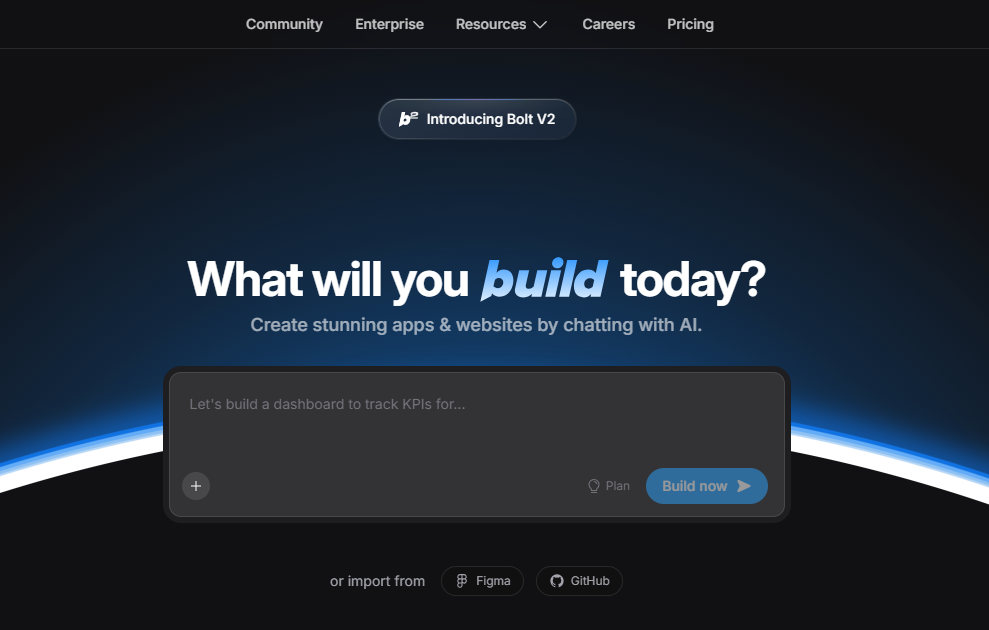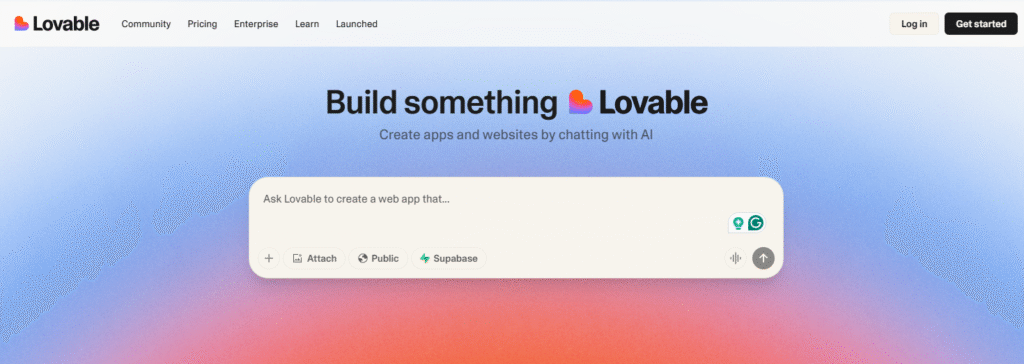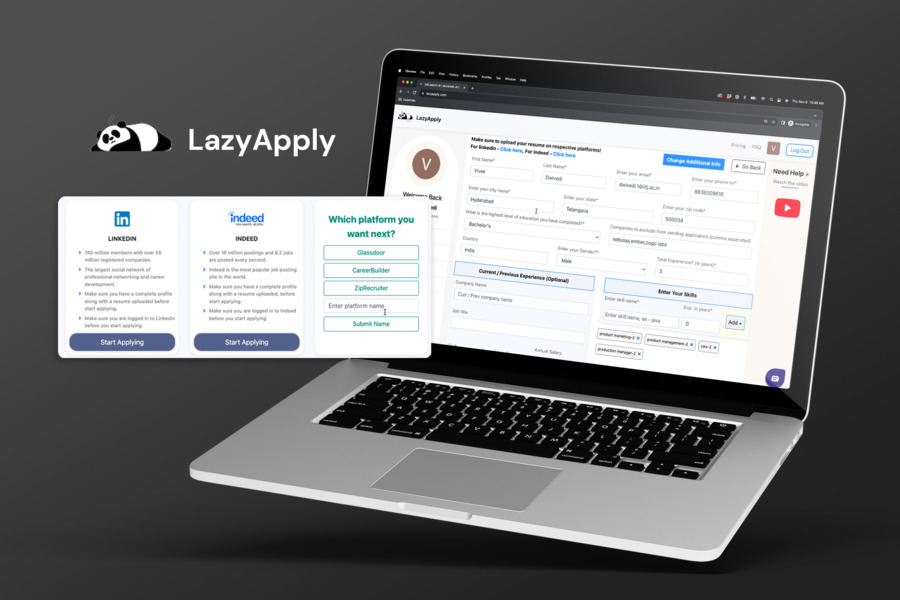If you’re hunting for the perfect AI coding companion, you’ve likely encountered the bolt.new vs lovable dilemma.
Both promise to revolutionize your workflow, but which one truly deserves your devotion?
This deep dive into the Bolt.new vs Lovable comparison will dissect their core strengths, highlight their unique quirks, and ultimately help you decide which AI coding sidekick is the right fit for your next digital masterpiece. Get ready to pick your winner.
What is Bolt.new?

Imagine having a full-stack developer living right inside your browser – that’s Bolt.new in a nutshell. This in-browser AI development agent thrives on speed and direct interaction, creating what feels like a futuristic coding sandbox right at your fingertips.
What makes Bolt.new particularly exciting is its backbone: WebContainers technology that keeps the entire development environment – file system, execution engine, and all – running directly in your browser tab. When the AI generates solutions, they implement instantly without the usual deployment headaches. It’s like having a coding superpower that works at the speed of thought.
The platform focuses primarily on websites and JavaScript-based applications, integrating smoothly with popular tools like Figma, Netlify, GitHub, and Expo. Under the hood, Bolt.new leverages Anthropic’s sophisticated models, including Claude 3.7 Sonnet and Claude Sonnet 4, known for their exceptional reasoning and code generation capabilities. If you’re the type who values rapid iteration and wants to see changes happen immediately, Bolt.new feels like it was built specifically for you.
What is Lovable?

While Bolt.new plays the role of speedy coder, Lovable AI positions itself as the careful architect. This tool champions what many call “vibe coding” – turning high-level design concepts into functional code with remarkable precision and minimal fuss.
Lovable AI truly shines when your workflow begins with clear visual plans. You can certainly build through conversation, but the magic happens when you import designs directly from Figma or upload images. Describe what you want in plain English, and Lovable AI translates that vision into clean, functional code that maintains design integrity.
The platform’s feature set reveals its focus on collaboration and enterprise readiness. Beyond its design-first approach, Lovable AI offers a dedicated chat mode for querying the AI and a precise edit mode for surgical code adjustments. The multiplayer feature transforms coding into collaborative whiteboard sessions, while built-in security scanning and robust deployment options make it production-ready from day one.
For more details, read our post on Lovable Review.
Bolt.new vs Lovable: Key Features Comparison
This is where the rubber meets the road. While both tools aim to simplify AI-driven app development, their implementation of key features reveals their fundamental philosophies.
1. Workflow and Design
- Lovable AI: The undisputed champion of design precision. Lovable prioritizes pixel-perfect, UI-tied edits. Developers can make direct adjustments to UI elements, and the changes are instantly reflected in live previews. This workflow is crucial for high-fidelity prototypes where “what you see is exactly what you get.”
- Bolt.new: Offers superior flexibility for cross-device development. Its recent expansion into mobile projects is a huge win. Bolt allows developers to rapidly prototype by simply dragging and dropping components that fluidly adjust for desktop or mobile views. This agility makes Bolt a perfect fit for startups and agencies that need to adapt to constantly changing project specs.
Verdict: Lovable excels in design fidelity and predictable UI workflows. Bolt offers superior, rapid flexibility for building across various device types.
2. GitHub Integration
For any professional team, Git integration is non-negotiable. This feature highlights the core difference in their workflow maturity.
- Lovable AI: Provides a seamless, two-way GitHub synchronization. Changes in the Lovable editor automatically push to the linked repository, and updates made directly in GitHub automatically reflect in the Lovable workspace. This feature dramatically enhances collaborative efficiency, automatically managing merge conflicts and supporting branch management right from the platform. It’s truly set-it-and-forget-it collaboration.
- Bolt.new: Requires manual uploads to GitHub. While you can export your project to GitHub, it’s a manual process of exporting files and uploading them. In a fast-paced environment, this manual step adds friction, time, and—critically—introduces the risk of human error.
Verdict: Lovable AI’s native two-way GitHub sync is a significant advantage, providing a smoother, more error-free collaborative development process compared to Bolt’s manual approach.
3. Supabase Integration
Backend as a Service (BaaS) platforms like Supabase are essential for modern web apps. The ease of connecting to them is a major productivity factor.
- Lovable AI: Offers a near plug-and-play setup. Developers can connect Supabase projects in a few clicks using pre-configured templates. The platform intelligently detects project needs, automatically setting up necessary API routes and authentication parameters. This is a massive time-saver.
- Bolt.new: Demands manual configuration for every aspect of the integration. Developers must manually set up API endpoints, authentication, and backend services. This approach requires a deeper, more time-consuming understanding of both Bolt’s internal workings and Supabase.
Verdict: Lovable AI is the clear winner for efficient, low-friction Supabase setup, offering a less technically demanding process.
4. Visual Editing and Figma Integration
The journey from design to code is where AI tools are supposed to shine.
- Lovable AI: Features robust, direct Figma integration. You can import wireframes, and the system converts the design into functional code while meticulously maintaining visual integrity. Layouts, assets, and style guides are all automatically translated into the corresponding HTML, CSS, or JavaScript code. This is the definition of a streamlined design-to-code workflow.
- Bolt.new: Uses a prompt-dependent visual editing system. Users must manually guide the conversion by specifying in prompts how design elements should be translated into code. While flexible, this requires a deeper understanding of both the design elements and the specifics of Bolt’s prompt system, often leading to more trial-and-error, especially for new users.
Verdict: Lovable AI provides a far more streamlined, direct design-to-code workflow with its native Figma integration, offering a more intuitive experience than Bolt’s manual, prompt-based approach.
Conclusion on Bolt.new vs Lovable
So where does the Bolt.new vs Lovable debate leave us? The truth is, both tools offer compelling solutions but excel in different scenarios.
Bolt.new emerges as the agile, fast-moving option perfect for rapid prototyping and iterative development. Its token-based pricing and browser-based environment make it ideal for smaller projects where coding speed and flexibility trump everything else. Think of it as your digital sandbox for bringing ideas to life at breathtaking speed.
Lovable AI stands as the polished professional choice for complex, high-fidelity applications. Its two-way GitHub integration, design-to-code precision, and collaborative features make it perfect for teams building production-ready applications with meticulous planning and seamless external service integration.
Your choice ultimately depends on your project philosophy and workflow preferences. If you crave flexibility, speed, and in-browser hacking magic, Bolt.new will feel like home. If your projects demand design precision, deep collaboration, and seamless service integration, Lovable AI will become your most trusted architectural partner.



